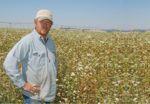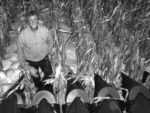Advertise Follow Us
Items Tagged with 'tillage radishes'
ARTICLES
No-Tiller Plants Seeds Of Success
Garth Mulkey improved soil structure,cut costs and nearly tripled the lineup of seed crops grown on his Oregon farm by committing to no-till
Read More
What I've Learned from No-Tilling
Perseverance, Equipment Updates Are Mainstays For No-Tiller's Success
More than 20 years learning, adapting equipment and expanding crop rotations to include small grains and cover crops are a winning formula for Wisconsin no-tiller
Read More
What I've Learned from No-Tilling
Equipment Dealer Brings No-Till Expertise To Growers
From the ABC's of no-till planters to how you can test your ag equipment dealer's no-till savvy, Dave Dum shares his knowledge
Read More









